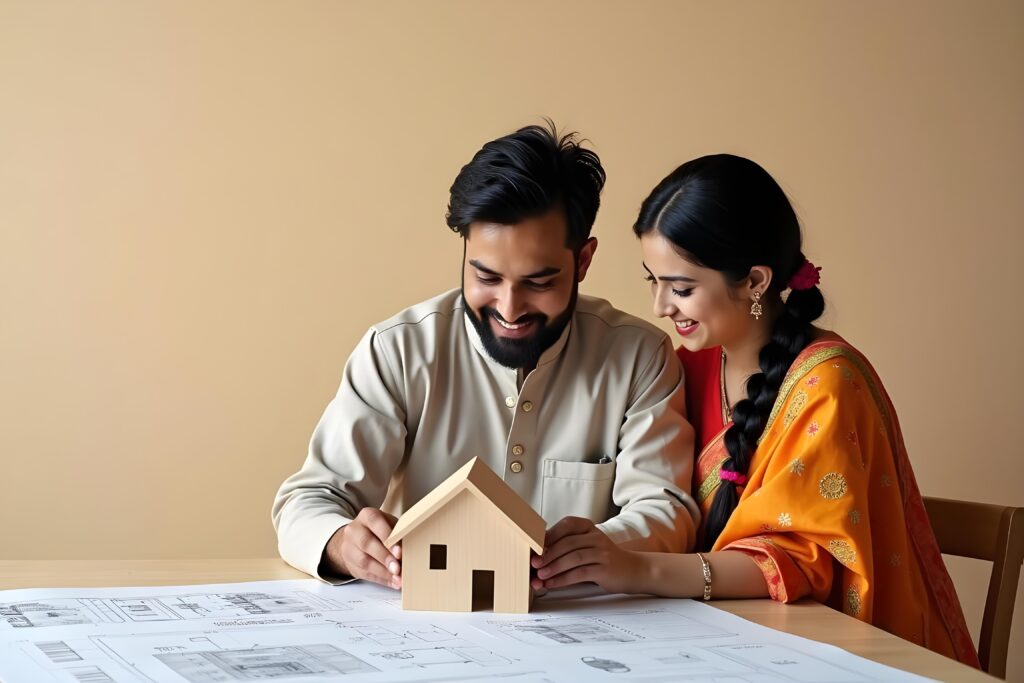Interior Design for Home That Balances Beauty and Practicality
Interior design for home is more than just arranging furniture or choosing a paint colour. It is an art form that blends creativity, functionality, and personality to create spaces where you truly feel at home. A well-designed home can lift your mood, improve your daily routines, and leave a lasting impression on anyone who visits. In today’s fast-paced world, your living space should not only be beautiful but also functional enough to meet your everyday needs. In this blog, we will explore practical and creative interior design ideas that can turn any ordinary space into your dream home, while reflecting your personal style and lifestyle preferences. How to Achieve a Perfect Balance of Style and Function in Your Home? From choosing smart layouts to incorporating multifunctional furniture, each idea will guide you to create a home that feels luxurious yet perfectly suited for daily life. 1. Start with a Functional Layout The foundation of good interior design for home begins with a functional layout. Rooms should be arranged in a way that supports daily activities without creating unnecessary clutter or restrictions. For instance, placing the dining area close to the kitchen makes meal times smoother, while keeping workspaces away from entertainment zones helps with focus. A thoughtful layout allows you to maximise available space while maintaining an aesthetic flow throughout your home. 2. Choose Multipurpose Furniture Furniture plays a vital role in balancing beauty and functionality. Multipurpose furniture such as sofa beds, extendable dining tables or storage ottomans saves space while adding versatility to your interiors. These pieces are especially helpful for smaller homes where every inch counts. By integrating stylish yet practical furniture, interior design for home becomes a smart solution for both hosting guests and meeting everyday needs without compromising comfort or design. 3. Optimise Natural Light Natural light not only enhances the look of your interiors but also improves your well-being. Large windows, skylights, and glass doors are excellent ways to invite sunlight indoors. Reflective surfaces like mirrors can further amplify natural light, making rooms appear larger and more open. For interior design for home, it’s important to choose light-coloured curtains or blinds that allow light in while still maintaining privacy. This balance ensures spaces are warm, welcoming, and energy-efficient. 4. Invest in Smart Storage Solutions A clutter-free home always looks more beautiful and feels more functional. Innovative storage ideas such as built-in cabinets, under-stair drawers or floating shelves allow you to store essentials without compromising style. For example, a bed with storage underneath can keep seasonal clothing tucked away, while modular kitchen cabinets provide easy access to cooking tools. By prioritising smart storage, interior design for home becomes about combining practicality with a polished and elegant look. 5. Focus on a Harmonious Colour Palette Colours play a major role in shaping mood and atmosphere. Neutral shades create timeless elegance, while pops of colour add vibrancy and personality. In interior design for home, it’s important to strike the right balance so your colour scheme doesn’t overwhelm the space. Accent walls, soft furnishings, and art pieces can be used strategically to introduce bold colours, while the overall palette remains cohesive and calming. A balanced colour palette creates beauty while supporting the functionality of each room. 6. Incorporate Durable Materials Homes are meant to be lived in, so durability is just as important as style. Materials like quartz countertops, ceramic tiles, and hardwood floors offer longevity while maintaining aesthetic appeal. Upholstery fabrics should be both attractive and resistant to wear and tear. For interior design for home, choosing durable yet beautiful materials ensures your spaces remain stylish without frequent maintenance. This approach allows your home to look elegant while standing up to the demands of everyday life. 7. Blend Technology with Design Modern homes require modern solutions. Incorporating smart technology such as automated lighting, climate control and integrated entertainment systems can enhance daily living. The key is to integrate these features without disrupting the overall design theme. For example, hidden wiring, sleek smart speakers, and wall-mounted screens can blend seamlessly into interiors. Interior design for the home should embrace technology as a tool to improve convenience and comfort while maintaining a stylish and cohesive look. 8. Personalise with Art and Accessories A home should reflect the identity of its residents. Personalised artwork, photographs, and accessories give your interiors warmth and individuality. In interior design for the home, adding elements like handcrafted decor, travel souvenirs, or custom-made furniture pieces ensures your space feels uniquely yours. These details not only enhance beauty but also tell a story, making the home more meaningful and lived-in. Personal touches balance functionality with emotional connection, turning a house into a true home. 9. Design for Comfort First No matter how elegant a room looks, it must feel comfortable to be successful. Ergonomic furniture, cosy textiles, and thoughtful layouts ensure that your home is enjoyable to live in. For example, soft rugs in the living room, plush cushions in the bedroom, and proper seating arrangements in the dining area create a sense of ease. Interior design for the home should always place comfort at the forefront, ensuring that the beauty of the space enhances rather than hinders daily living. 10. Stay Timeless While Adapting Trends Trends are exciting, but they can fade quickly. A balanced interior design for home involves incorporating timeless pieces while experimenting with smaller, trendy elements. Invest in classic furniture and neutral palettes that will stand the test of time, and use trend-driven accessories like cushions, wall art, or lighting fixtures that can be updated easily. This balance allows you to keep your interiors stylish without requiring frequent major renovations. Conclusion Interior design for home is about more than just appearances. It is the thoughtful combination of beauty and practicality that makes a space truly special. In this blog, we explored how functional layouts, multipurpose furniture, natural light, smart storage, and personalised touches can bring harmony to your home. Balancing aesthetics with durability, technology, and comfort ensures that your space looks stunning



